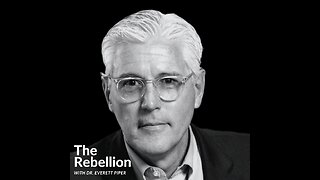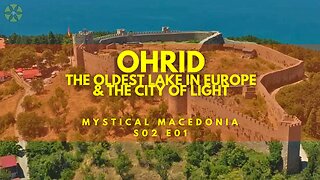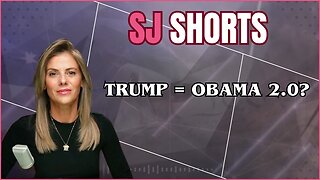Premium Only Content

The Jewish Mystic
“I am in the Father and the Father is in me” (John 14:11).
In her classic work, Mysticism, Evelyn Underhill summarizes the mystical way as, “… the art of establishing a conscious relation with the Absolute.”
Jesus referred to the Absolute as the Father, no doubt as an endearing indication of the all-providing nature of our spiritual Source. The relationship of oneness with God is the foundational principle recognized by the mystics of each of the world’s major religions. Commenting on this universal theme, one website includes the following statement:
“ … despite vast separations in time, place, language, and culture, [the testimonies of these mystics] are strikingly similar—so much so that many scholars have come to view their teachings as constituting a single perennial philosophy which, like some irrepressible flower, keeps blooming again and again in the human psyche” (Center for Sacred Sciences).
Jesus was a Jewish mystic. He was so aware of his oneness with God that it became his sole mission in life to teach others the value of knowing their oneness with the Father. “For this I was born, and for this I have come into the world, to bear witness to the truth. Every one who is of the truth hears my voice” (John 18:37).
The challenge we face when reading our Gospels, is that they were written by Christian evangelists who incorporated the teachings of a Jewish mystic into their accounts. Truth, to the evangelist, refers to the validity of the Jesus narrative that had evolved over the forty years after his death. Truth, to the mystic, is the art of establishing a conscious relation with the Absolute.
According to the Jesus Seminar, in 1694, Hermann Samuel Reimarus, a professor of oriental languages in Hamburg, Germany, was convinced by a close study of the New Testament gospels, “… that what the authors of the gospels said about Jesus could be distinguished from what Jesus himself said” (The Five Gospels: Introduction). Reimarus is credited for being the first to begin a quest for the actual Jesus of history.
To use a metaphor of Jesus, making this distinction requires most of us to break out a new wineskin. That is, we must be willing to take a new look at the story the evangelical Christian has passed down through the ages. This story has us looking to the future for a Second Coming. I have come to believe that if we truly grasp the heart of the spiritual genius of this Jewish mystic, the first coming will suffice.
-
 LIVE
LIVE
The Bubba Army
14 hours agoDerek Chauvin a Free Man? - Bubba the Love Sponge® Show | 5/15/25
1,646 watching -
 6:26
6:26
Adam Does Movies
16 hours ago $0.10 earnedSuperman | Official Trailer - Reaction!
229 -
 31:05
31:05
Ohio State Football and Recruiting at Buckeye Huddle
14 hours agoOhio State Football: Five Breakout Players for the Buckeye Offense in 2025
161 -
 12:50
12:50
Professor Gerdes Explains #Ukraine
8 hours agoAre we on the Brink of WWIII: 1938-39’s Grim Clues!
11 -
 18:08
18:08
Clownfish TV
13 hours agoCartoon Network is DYING.
6467 -
 13:39
13:39
IsaacButterfield
1 day ago $0.16 earnedThese Trans Influencers Are Unbelievable (Insane TikTok Compilation)
1.32K6 -
 1:04:51
1:04:51
DrEverettPiper
1 day agoThe Rise and Fall of the Old Mainstream Media
233 -
 24:19
24:19
ArturRehi
16 hours agoPUTIN and ZELENSKY meeting in Turkey?! | Putin’s bluff got called | Ukraine update
286 -
 9:36
9:36
Ariston Production from Macedonia
2 days agoThe oldest lake in Europe is in Macedonia | Lake Ohrid and the city of light
1121 -
 8:06
8:06
The Shannon Joy Show
13 hours ago⚠️The Middle East is Coming to America!🔥
6733